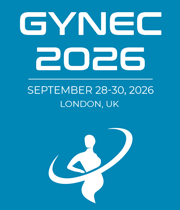Title : The impact of preconception antioxidant nutrients on men with low motile sperm concentration measured by the yo home sperm test: A prospective study
Abstract:
Objective: To investigate the effect of preconception antioxidant nutrients on motile sperm concentration (MSC) after three months of supplementation in men with low baseline MSC who are trying to conceive at home.
Materials and Methods: Participants with a low-normal MSC ranging from 6-39 × 106/mL were invited to enroll in this prospective, single-arm experimental study. This approach aligns with the definition of a "low-normal" subgroup used in prior studies. Participants took a daily antioxidant nutrient complex (Male Fertility Power Pack, Bird&Be, Toronto, Canada) for a duration of three months. In parallel, they were instructed to complete a baseline test followed by monthly follow-up tests using the YO Sperm kit for three consecutive months. All semen analyses were conducted at home using the FDA-cleared YO® Home Sperm Test (YO). Tests were self-conducted by participants, and results were electronically recorded and confidentially shared with study investigators. Changes in motile sperm concentration (MSC) were analyzed using paired samples t-tests, and effect size was assessed with Cohen’s d. A p-value <0.05 was considered statistically significant.
Results: The 126 enrolled participants had a mean MSC of 25.2 (±8.4) × 106/mL at baseline, which increased to 34.6 (±24.9) at month 1, 35.4 (±24.9) at month 2, and 37.7 (±20.3) at month 3. Significant improvements in MSC were observed from baseline to month 1 (37% increase; t(72) = 2.66, p = 0.02, d = 0.30), month 2 (40% increase; t(53) = 2.62, p = 0.002, d = 0.34), and month 3 (49% increase; t(34) = 3.57, p = 0.008, d = 0.58). As shown in Table 1, there were trending increases in mean MSC with each consecutive month, although these were not statistically significant. Self-reported side effects included nausea, gastrointestinal discomfort, and discoloration of urine due to vitamin B2. Self-reported compliance was 98%, 64%, and 33% for months 1, 2, and 3, respectively.
Conclusions: Among men with low-normal MSC values, the preconception antioxidant nutrient complex led to a statistically significant improvement in MSC, sustained over the three-month intervention period.
Impact Statement: This research underscores the potential role of low-level interventions, such as antioxidant supplementation, in supporting male fertility and the positive application of YO to capture and monitor home-based male fertility data. Future studies should aim to enhance participant compliance and examine the effects of antioxidant use on additional markers of fertility and sperm quality.




